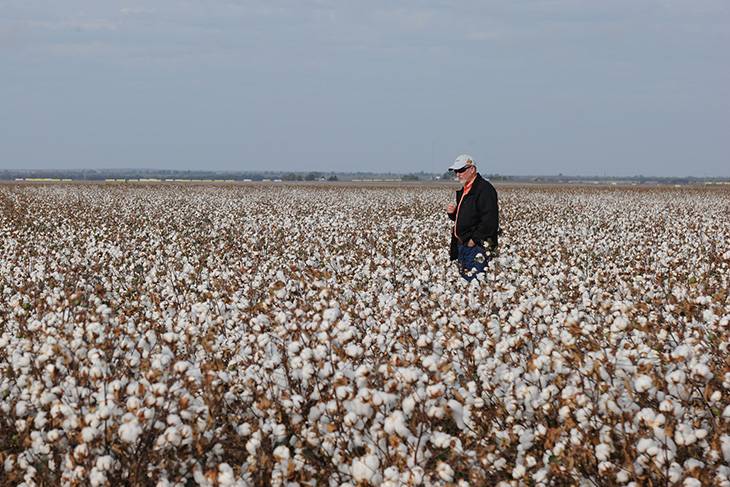OSU research seeks soil pH answers for wheat producers who also grow cotton
Monday, August 10, 2020
Ongoing Oklahoma State University research into soil pH is providing insights for wheat producers looking at planting cotton in their crop rotation.
Many producers already recognized that the lack of agricultural liming in traditional wheat fields could be a challenge with growing cotton, but specifics as to how different soil pH levels might affect the second crop’s performance was an unknown factor, said Brian Arnall, OSU Extension precision crop nutrient management specialist.
Soil pH – a measure of acidity and alkalinity – can range from zero to 14, with the optimal range for most plants falling in the 5.5-7.0 zone.
“The Oklahoma Cotton Support Group has been helping us perform research trials the past few years looking at cotton yield, quality and overall production,” he said. “In recent years, cotton production has expanded into regions that traditionally grew wheat, which can grow in low soil pH realms and do well in terms of yield. We’ve been studying two different cultivars across a range of soil pH levels.”

Arnall recently spoke about the research trial on OSU Extension’s agricultural television show SUNUP, available for viewing online.
Important takeaways include:
- A soil pH level of 4.0 resulted in fewer than one cotton plant per 10 row feet.
- A soil pH level of 5.0 exhibited six to eight plants per 10 row feet, but quality was poor and plants were short.
- The transition mark in terms of unacceptable and acceptable plant performance was seen at the 5.5. soil pH level.
“This trial is a drastic example of why soil testing is so important. Good soil management is a must to successfully grow a good crop. Profit margins are too tight for most producers to risk not knowing the soil profiles of their fields,” he said.
It takes 200-300 days for agricultural liming to effectively change soil pH in a field. OSU recommendations are to harvest the wheat crop in June or early July; take soil samples and have them tested; get the analysis and immediately apply the necessary lime, giving it a chance to work over the fall and winter. Come spring, plant the cotton.
“Remember that the rate of change from liming is heavily dependent on available soil moisture,” Arnall said. “Typically, the farther west one goes in the state, the longer it will be to see full advantage because of lesser rainfall amounts.”
OSU Extension is one of two state agencies administered by the university’s Division of Agricultural Sciences and Natural Resources and is a key part of OSU’s state and federally mandated teaching, research and Extension land-grant mission.
MEDIA CONTACT: Donald Stotts | Agricultural Communications Services | 405-744-4079 | donald.stotts@okstate.edu
